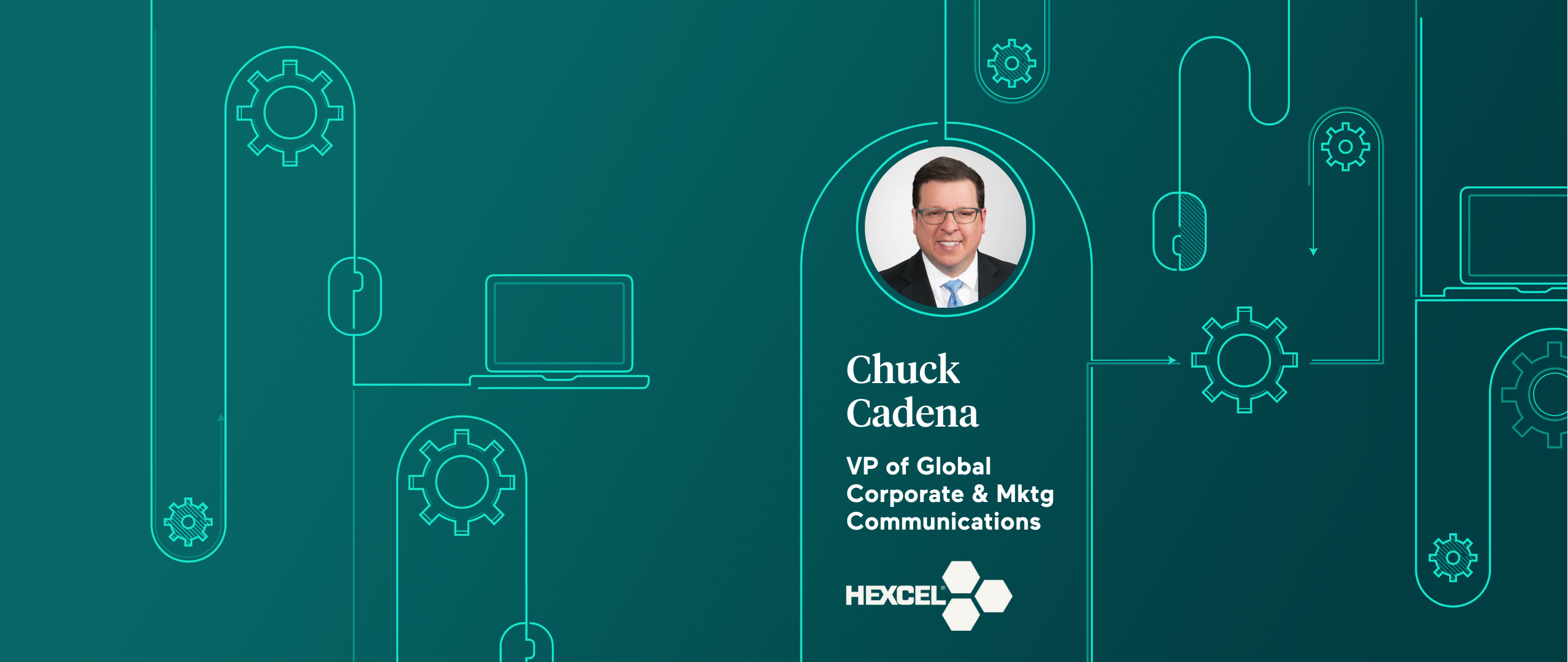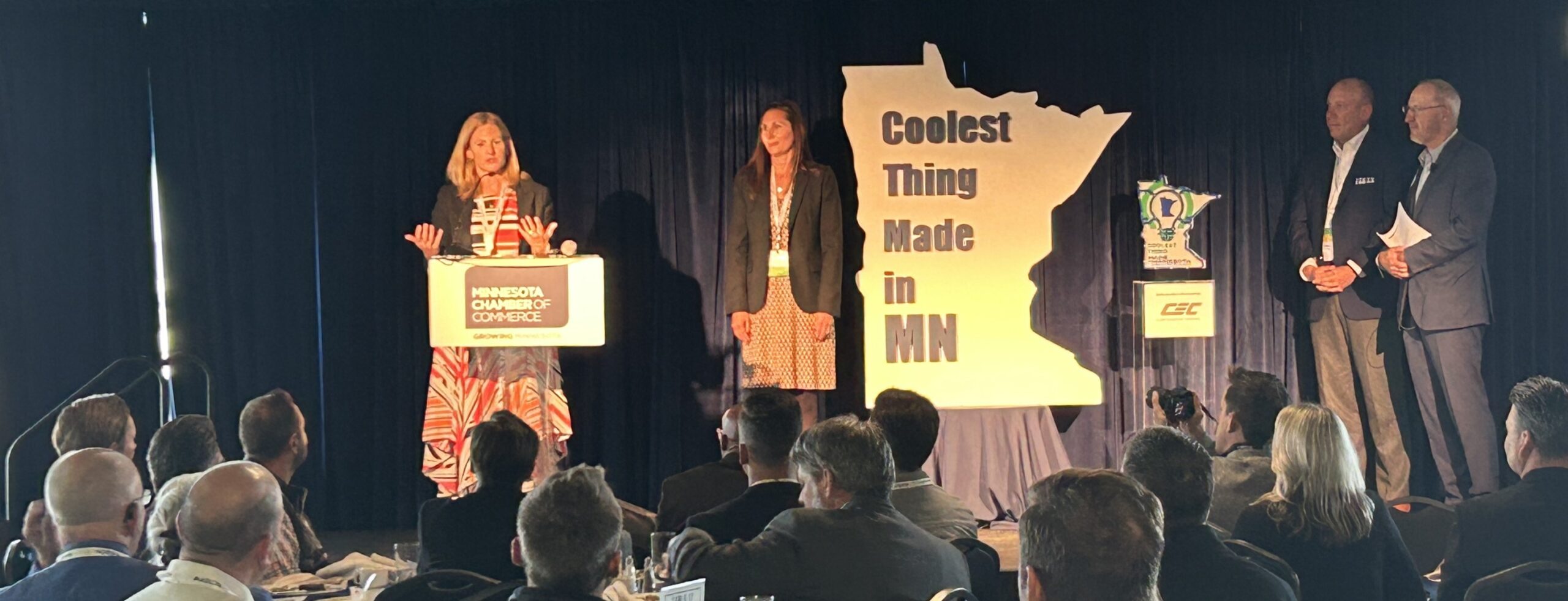Innovative Manufacturing Leader Series: Insights from Kimberlee Sinclair, VP Digital Customer Experience at H.B. Fuller
B2B buying preferences are changing rapidly. Providing a digital buying experience is no longer a nice to have; it’s table stakes for sustaining a business. In fact, according to Gartner, 80% of all B2B commercial interactions will be done in digital channels by 2025, and 43% of buyers already want a seller-free, digital experience.
But it is not an easy transition in some industries, especially within large, global manufacturing companies with well-established, traditional sales and marketing operations.
No one knows this better than Kimberlee Sinclair, Vice President, Digital Customer Experience at H.B. Fuller, who is leading the enterprise-wide digital transformation of the adhesives buying journey.
As H.B. Fuller works to build a strong, digital customer experience across every touch point, Kimberlee’s focus is specifically on the marketing and sales portion of the buyer’s journey.
And as a lifelong learner comfortable with the unknown and in a constant state of “upgrade and refine,” she has the right mentality for the role. Also, the right background. With 30 years in communications and marketing and leading H.B. Fuller’s global digital marketing and corporate communications for 12 years, she acutely understands the voice of the customer and how digital experiences will fundamentally change the adhesives industry.
In the last decade, she’s had a front-row seat as H.B. Fuller tripled in size through organic growth, two major acquisitions, and over 20 smaller technology play acquisitions.
H.B. Fuller’s goal is to double in size again in three years. Getting there requires sizable change management to create a digital customer experience. The initiative spans three global business units, 30 market segments selling more than 10,000 different adhesives, sales in 125+ countries, 71 manufacturing facilities in 34 countries, 35 technology centers, and 7,000+ employees for the $3.75 billion-dollar company. For H.B. Fuller, digital transformation is leveraging technology to augment its high-touch partnership model or “high tech to enable high touch,” as Kimberlee says.
She explains that digital transformation happens at the intersection of people, processes and technology. When the right systems deliver the right information to the right people at the right time, customers have consistent, positive experiences. And when you remove friction in the process, you earn loyalty.
But a highly personalized go-to-market strategy requires very close cross-functional partnerships. While machines are automating routine tasks, H.B. Fuller’s products, services, and overall experience will continue to need smart people and process behind the technology to deliver the nuances that enable customers’ performance goals.
I sat down with Kimberlee to pick her brain on what successful digital transformation of the sales and marketing journey takes within a large, global adhesives manufacturer. Here’s what she had to share:
1. Total and complete commitment to bringing the vision to life—including a digital-first culture
Achieving global transformation of the customer experience requires buy-in from the top down; at the outset, executive leadership and the board of directors need to be aligned. The most critical aspect of any transformation is change management. The entire company needs to understand the vision, why it’s essential, how we’ll get there, and be held accountable for success.
Commitment to the vision comes down to culture and talent, which, again, starts at the top. H.B. Fuller attracts people who want challenging and dynamic work and want to feel like they’re participating in something bigger than themselves and adhesive products. In addition to understanding the vision of digital transformation, employees understand the broader importance of how their work is impacting and, in some cases, saving people’s lives.
With that sense of purpose, change management becomes easier.
2. Set the long-term vision, but accomplish 4-5 small lighthouse projects each year
Once you understand what the end game looks like, identify milestone projects that are small, measurable, and meaningful to the organization and that you can realistically tackle each year. Being able to report back to the organization on these projects builds a groundswell. And if one fails, have a “fail-fast and move-on” mentality. Examples of lighthouse projects Kimberlee’s team is tackling include launching a customer e-commerce site and implementing customer sentiment tracking and analysis.
3. Build strong partnerships throughout the company
It takes great relationships, partnerships and collaboration at all levels to cater to the customer journey. Some key cross-functional relationships Kimberlee suggests building are:
- IT: Essential for bringing digital experiences to life, the IT team is a key partner in transformation. H.B. Fuller’s IT team has robust expertise with dedicated specialists focusing on user experience, integrations and e-commerce solutions that all intersect with the overall buyer’s journey.
- Business unit leaders: H.B. Fuller’s business units are broken up by the company’s 30 different market segments, all of which will be brought into the digital transformation process over time. Kimberlee suggests prioritizing the like-minded, hungry business unit leaders eager to participate to gain quick wins early on.
- Customer Service, Product, & Sales: These teams arguably should understand the voice of the customer the best by speaking to the customer firsthand on a regular basis. Collaboration with these customer-facing teams is key to not only understanding what needs to change but in implementing experience changes at each of their particular touch points.
4. Create the proper IT infrastructure
Creating a seamless B2B search and buyer experience—one that’s more akin to the likes of Amazon than what’s found in the adhesives supplier industry today—takes several sophisticated tools, all integrated and cohesively working together. Some of the foundational technology Kimberlee and her team are implementing includes:
- A customer experience management platform: H.B. Fuller sees a customer experience management platform, such as Qualtrics, as a must-have for collecting customer feedback and data. But it can’t be just about collection—feedback and data need to turn into insights that are applied to the journey in real-time.
- A digital asset management system (DAM): This consolidates, organizes and streamlines assets from six different H.B. Fuller systems. The system enables sales employees who interact with it to find files, airdrop key documents to prospects and customers, and translate assets to different languages in real-time quickly and easily. The business estimates that if 30 employees in marketing and sales roles waste about 10 hours per month looking for assets, they could add $142,000 in value by implementing a DAM as the single source of truth. That value represents 200% ROI in the first year alone.
- A customer site: Kimberlee is also building a product-focused customer site based on how a chemist or an engineer thinks. The site goes 40 layers deep for search functionality—a product finder on steroids. Over time, customers will be able to request a sample, a price, a quote, download technical data, engage with an expert through live chat and eventually purchase products online.
- A product information management system (PIM): This will allow H.B. Fuller to store, organize, manage, and update all product information and assets for customer-facing teams in one place. PIMs streamline and automate the process of updating product information across sales and marketing assets—essential when you produce over 10,000 adhesive products!
In conclusion, the biggest takeaway from my conversation with Kimberlee is this: Clear, consistent messaging that resonates with the buyer’s pain points, paired with removing friction in the process—thereby making it easy for them to do business with you—are still at the core of a better customer experience and at the core of business growth. She put it well: “Digitization is an innovation enabler … teams that strip out complexity will free up mindshare to dream up entirely new products and ways to serve.”
Stay tuned for more interviews with innovative manufacturing leaders who are transforming the B2B marketing and sales process!



